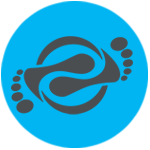A note from publisher Steve Cohen
It’s hard to be sure of anything these days, especially the Winter 2021 ski season.
The world, and especially the United States, will most likely still be dealing with the COVID-19 pandemic when the first snows start dusting the high peaks. And the international ski trips on your bucket lists will have to be postponed for at least another winter.
All this doesn’t mean we can’t still enjoy the sport we all love. The inherent nature of skiing makes it possible to enjoy our sport with recommended social distancing precautions. Heck, skiers have been wearing face and eye coverings for a century.
Sure we will have to adjust to new lift-riding protocols and outdoor dining with grab-and-go fare. This winter will be more like the old days when skiers would often return to their vehicles and dine alfresco with a home-prepared picnic.
One thing is for certain: owning your own gear is more important than ever this season. Renting will surely be more cumbersome and time-consuming than before. There’s industry talk of ski and pole fulfillment moving outdoors where possible, but boot fitting will most likely still be an indoor affair—with lots of people jockeying to be served. And seriously, who would ever want to ski in a rental boot?
Many on the Buyer’s Guide staff have enjoyed demoing freshly tuned high-performance skis on destination trips recently, but we’ll be schlepping our own boards this year.
While most resorts and shops will be taking yeoman disinfection precautions, is this really the year you want to be using gear—boots, helmets, poles, goggles, gloves—that are being passed among hundreds of different people? The more touch points and public contact you can eliminate, the better.
Once you’ve made the decision to buy or upgrade your gear, call or go online before visiting your shop. Many will be serving customers by appointment, especially for bootfitting, which is the most high-touch, high-contact shopping experience.
Masterfit, the publisher of this Buyer’s Guide and operator of the Masterfit University Bootfitter Training Centers, has created a recommended set of protocols for bootfitting operations. You can find them listed below. America’s Best Bootfitters shops will all be following them.
These stores have experts who can identify your foot type and match it to boots that will best serve your needs—in a fraction of the time “guess-fitting” shops do it.
If you are not able to visit an ABB shop, call ahead and ask about service protocols so you know what to expect. Like all retail operations, some shops are taking virus transmission prevention more seriously than others, and safety precautions will vary at different locations.
Be a well-prepared and educated shopper. You’ve already taken the first step by getting this Buyer’s Guide. As you browse through the Masterfit Buyer’s Guide, you’ll find practical advice not just on what to buy, but how to buy as well as maintain and use it.
Even the most experienced ski enthusiasts will pick up a tip or two from one of our advice columns. Read about what’s new from our comprehensive ski and boot test reviews. If you’re hungry for more details of this season’s top gear picks, visit our Realskiers.com and Bootfitters.com websites for more in-depth reviews.
So there are still plenty of reasons to be excited about skiing this winter. And we expect to see all of you on the slopes. With a mask and from a properly distanced 6 feet, of course.
Bootfitting in the Time of COVID-19 Guidelines:
To help safeguard shop personnel and create a comfortable environment for customers, at this time Masterfit recommends the following bootfitting practices be adopted by snowsports shops:
-
Schedule bootfitting appointments and discourage drop-ins. Promote appointment bootfitting on the shop website, through direct mail and email. Let customers know that drop-ins can expect longer wait times than normal.
-
A “gatekeeper/greeter” should verify all appointments and should be present to control and limit access to the bootfit area.
-
To minimize person to person contact, only customers being fit for boots shall be allowed in the bootfit area, unless parental assistance is required.
-
If possible, bootfitting stations should be separated by a plastic curtain or plexiglass panel.
-
All critical touch surfaces, measuring devices, tools, reusable shields, etc. should be disinfected before each fit session.
-
Customers must bring proper ski or snowboard socks or purchase new socks for the fitting. Try-on socks will not be made available.
-
All bootfit customers must wear a face mask or other acceptable face covering. No exceptions. Face shields may be made available to customers for an additional layer of protections. Where face shields are an option, they are to be worn in addition to a face mask, not in place of one.
-
Hand sanitizer should be available for customers to apply prior to touching any bench or product surface.
-
Bootfitters should wash hands or apply hand sanitizer before each fit evaluation and must wear a face mask or other acceptable face covering during all customer interactions. Bootfitters may also opt to wear a face shield or protective eyewear as well as gloves.
-
Boots that were tried on but not purchased must be sanitized before being returned to stock.

